John Hurrell – 26 June, 2013
In these later images, Pardington has moved away from exploring items lined up within an institutional space towards emphasising things located by themselves in the image centre. He ends up accentuating the objectness of the containers, and imbuing them and their contents with a fetishistic aura. The thick white plastic lids and cylindrical, logo-moulded glass also take on a symbolic dimension affirming the opacity and materiality of language.
Downstairs in the large Two Rooms gallery, Wellington photographer/designer Neil Pardington is showing some of the photographs that featured in his large 2009 Christchurch Art Gallery exhibition, The Vault, as well as a selection of very recent work based on specimens in the marine science collection of Auckland Museum Tamaki Paenga Hira.
The Vault exhibition and its accompanying hardcover publication has quite a fan base, and the earlier works here show why. Even though the art and museum world has a propensity for looking up its own fundament, constantly scrutinising its own (normally hidden) processes and internal/external relationships, these horizontally rectangular works documenting items - and spaces - in the collection storage ‘bunkers’ of various New Zealand institutions have a wit and a surprisingly airy feel: they don’t seem at all claustrophobic, too ‘inhouse’ or incestuous.
The recent photographs - vertical rectangles showing examples of underwater animal life stored in screwtop Agee jars - is very different in mood. One configuration has a grid of 48 images in a small size and there are two examples of larger versions.
Their depicted glass containers, with their crammed in arthropods, are suspended in darkness and lit from behind. The streaming light and surrounding blackness creates a theatricality that hints at mysticism, a living power dwelling behind the thick distorting glass - with the doubled-up (often translucent) specimen itself remaining unknowable.
Even though it provides the title for the new works exhibited here, it is interesting to note that Foucault’s The Order of Things is generally considered the most inconsistent and unresolved of all his books. (See pertinent publications by J.G.Merquior and James Miller.) Despite being a smash hit in France in 1966 it was understood by very few - and apparently Foucault later considered having it withdrawn - although it clearly fits into a sequence of publications developing ideas within the field he termed ‘The Archaeology of Knowledge’.
Like Foucault, Pardington is inconsistent, but deliberately so. An image of a kiwi and a jars of small bottles and paper print outs identifying locations are included as ‘marine life’. The contents of some jars are wet (formalin, or seawater?) while others are dry, containing curling paper and shells.
With the anti-ocular stance of Pardington’s images (the dominant jars regularly thwart the viewer’s gaze) the title The Order of Things seems intended to be sardonic, an irony-laden comment on the dominant taxonomic system of binominal nomenclature devised by the Swedish scientist Carl Linnaeus, and possibly inspired by a brief account by Foucault in his preface of the quirky classification logic of an ancient Chinese encyclopaedia.
In these later images, Pardington has moved away from exploring items lined up within an institutional space towards emphasising things located by themselves in the image centre. He ends up accentuating the objectness of the containers, imbuing them and their contents with a fetishistic aura, and connecting them via their black background with photographic works like, say, Christine Webster’s Black Carnival series.
The thick white plastic lids and cylindrical, logo-moulded glass also take on a symbolic dimension affirming the opacity and materiality of language, a quality that matches the strangeness of the Latin-based nomenclature and the exasperations of searching for an underpinning rational order. Mostly exoskeletons and brittle shells, the delicate and glowing contents are wedded to the bottles surrounding them, mysterious referents encased and trapped in isolation - but through their radiant light, beckoning to us nonetheless.
John Hurrell
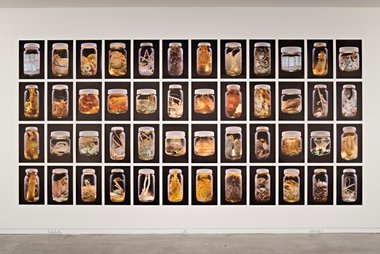






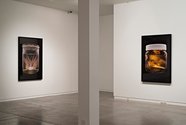


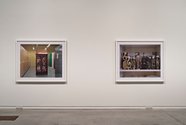
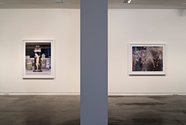
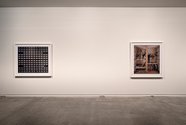
 Advertising in this column
Advertising in this column Two Rooms presents a program of residencies and projects
Two Rooms presents a program of residencies and projects



This Discussion has 0 comments.
Comment
Participate
Register to Participate.
Sign in
Sign in to an existing account.